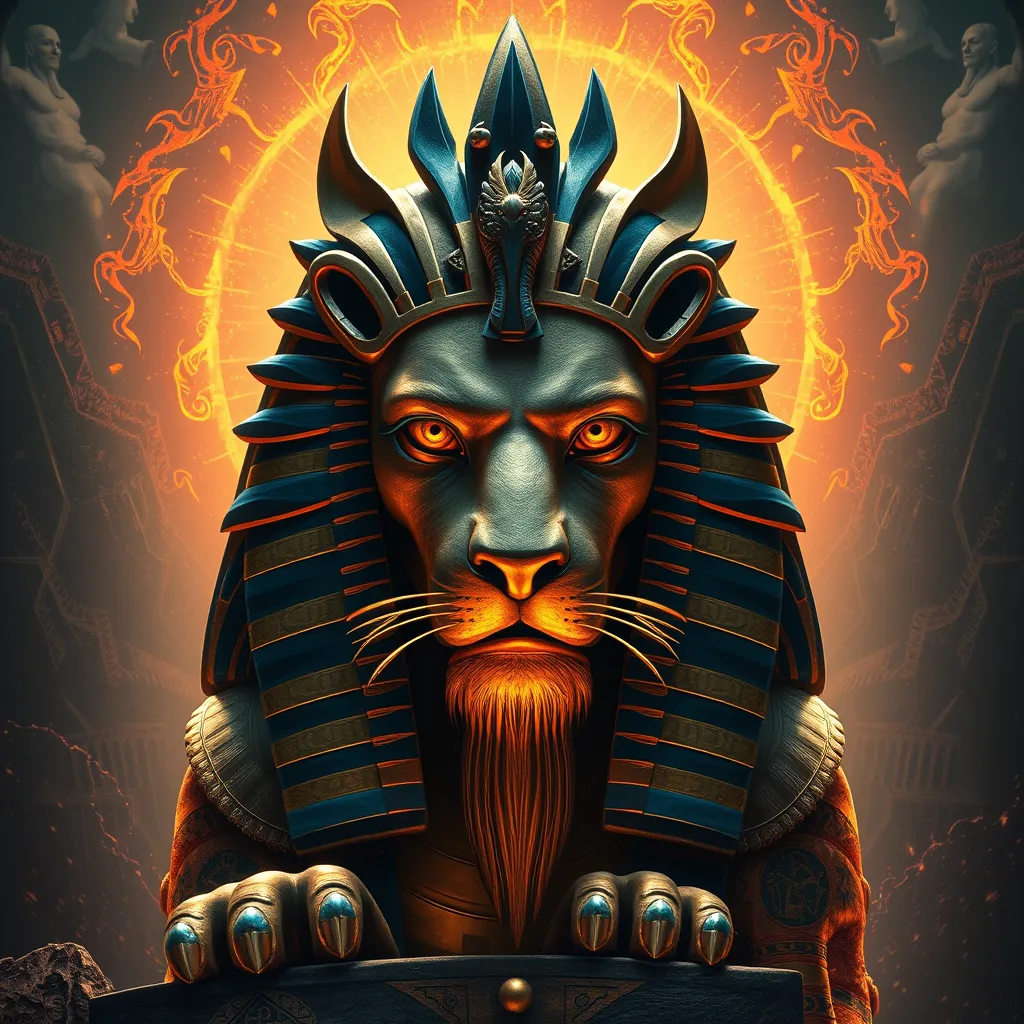The Lion of Egypt: The Legend of Sekhmet, Goddess of War
I. Introduction
Sekhmet, the fierce lioness goddess of war, holds a prominent place in ancient Egyptian mythology. Revered as both a protector and a destroyer, she embodies the duality of strength and healing, reflecting the complex nature of life and death in ancient beliefs. This article aims to explore the significance of Sekhmet, her historical context, myths, worship, and her enduring legacy in modern times.
II. Historical Context of Sekhmet
Sekhmet’s origins can be traced back to the early dynastic period of ancient Egypt, where she was recognized as the daughter of the sun god Ra. Her fierce nature and association with war made her one of the most formidable deities in the Egyptian pantheon.
The cultural importance of lions in Egyptian society cannot be understated. Lions symbolized strength, power, and ferocity, qualities that were essential for the protection of the Pharaohs and the nation. Sekhmet’s lioness form was emblematic of these traits, making her a potent symbol of war and protection.
Within the pantheon of gods and goddesses, Sekhmet was often seen as a counterpart to other deities such as Hathor, the goddess of love and joy. This juxtaposition highlights the ancient Egyptians’ understanding of the balance between creation and destruction.
III. Iconography and Symbolism
Sekhmet is typically depicted as a woman with the head of a lioness, showcasing her fierce and protective nature. She is often shown wearing a solar disk and a uraeus, the cobra that symbolizes royalty and protection.
- Lioness Head: Represents her ferocity and protective instincts.
- Solar Disk: Symbolizes her connection to the sun and her role as a bringer of life and destruction.
- Ankh: Often associated with life, it emphasizes her dual role as a goddess of both war and healing.
The significance of her attributes lies in her ability to bring both destruction in battle and healing for the wounded, portraying the complex nature of war and its aftermath.
IV. Myths and Legends Surrounding Sekhmet
One of the primary myths associated with Sekhmet is the creation myth where she was said to be born from the fire in Ra’s eye, representing the sun’s power. This origin story underscores her role as a fierce warrior.
Another prominent legend involves Sekhmet’s wrath against humanity. It is said that she was sent by Ra to punish humanity for their disobedience. Her rage was so intense that she threatened to annihilate humankind. To quell her fury, the gods devised a plan involving beer dyed red to resemble blood, tricking her into drinking it and thus pacifying her.
This transformation from a goddess of destruction to a goddess of healing marks a significant turning point in her mythology, illustrating the ancient Egyptians’ understanding of the cyclical nature of life, death, and rebirth.
V. Sekhmet’s Worship and Rituals
Temples dedicated to Sekhmet were constructed throughout ancient Egypt, with the most notable being the Temple of Sekhmet at Karnak. These temples served as centers for worship and healing, where rituals were performed to appease her and seek her favor.
Festivals in honor of Sekhmet often included processions, offerings, and rituals intended to invoke her protective qualities. The “Feast of Sekhmet” was particularly significant, where participants would engage in various ceremonies to celebrate her power and seek her blessings.
The role of priests and priestesses in her worship was crucial, as they conducted the rituals and maintained the temples. They acted as intermediaries between the goddess and the people, ensuring that Sekhmet’s favor was attained for protection and healing.
VI. Sekhmet in Art and Literature
Artistic depictions of Sekhmet are abundant in ancient Egyptian art, ranging from statues to wall carvings. She is often portrayed alongside other deities, emphasizing her significance within the pantheon.
References to Sekhmet can be found in ancient texts and inscriptions, highlighting her importance in religious practices and beliefs. The “Book of the Dead” and various pyramid texts mention her, showcasing her role as a protector of the deceased in the afterlife.
The influence of Sekhmet has extended beyond ancient Egypt, inspiring later cultures and literature. She has appeared in various forms in modern storytelling, often symbolizing strength and empowerment.
VII. Modern Interpretations of Sekhmet
In contemporary spiritual practices, Sekhmet is often invoked as a symbol of female empowerment and warrior energy. Many modern practitioners of various spiritual paths revere her for her strength and healing abilities.
There has been a resurgence of interest in Sekhmet within pop culture, with her character appearing in films, literature, and art, often as a representation of fierce femininity and the complexities of power.
The themes represented by Sekhmet—war, protection, healing, and balance—remain relevant in today’s world, encouraging individuals to embrace their strength while also recognizing the importance of compassion and healing.
VIII. Conclusion
In summary, Sekhmet’s multifaceted nature as a goddess of war encapsulates the complexities of life and the dualities that exist within it. Her legacy as a powerful protector and healer continues to resonate in both ancient and modern contexts.
Understanding ancient deities like Sekhmet allows us to appreciate the rich tapestry of mythology and the lessons they impart about strength, balance, and the cyclical nature of existence. The story of Sekhmet serves as a reminder of the importance of recognizing both our fierce and nurturing qualities as we navigate the challenges of life.




